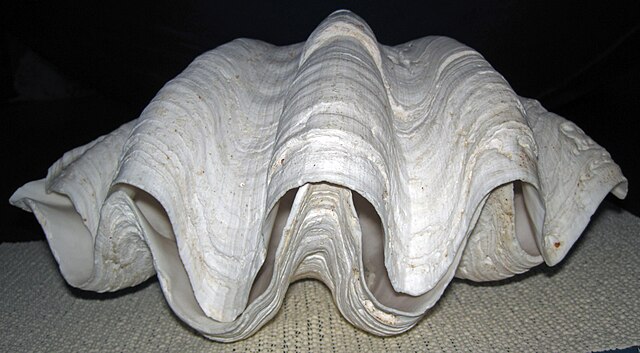Guam’s sea shell culture is on the line following a U.S. agency’s proposal to include giant clam in the “Endangered Species Act.”
The National Oceanic and Atmospheric Administration (NOAA) has been contemplating the move since 2016.
Such a legislation could affect the heritage of the south Pacific Mariana islands that pride in strong seashell traditions. Aptly enough, some call the islands the “Sinahi archipelago” to indicate the sinahi culture that uses giant clam shell ornaments.
A fisherman known as Ronald Laguana told the Guam Post as much in an October 6, 2024 story, terming sinahi as a part of identity. Chieftains would wear these in the past to signify the most appropriate times to fish both inland and at sea.
Laguana was echoing a strong position by the country’s Department of Agriculture, which is opposing the listing.
The department cites a previous cultural and religious repercussion of sea turtle listing as a deterrence for the current proposal. The classification of sea turtles as endangered not only disrupted the sale of spiritual icons from turtle shells but related products, too.
Earlier in July 2024, the territorial delegate from Guam, James Moylan had asked NOAA to also consider the cultural aspect.
He termed a listing as tantamount to restrictions from wearing ornaments or the possession of shells for trade.
Guam’s Chamorro people consider seashells a part of their heritage, including chiefs who wear them for religious or social purposes. In old times, body adornments such as Salapethat and ålas from both clam and tortoise seashells held much appeal.
Other than jewelry, the sea bivalves also provide food, livelihood and artisan work in aquaculture projects.
It all began in 2016, when NOAA first proposed to list ten giant clam species as either under threat or endangered.
The proposal took off with seven species that later included the Hippopus and Tridacna genus members. There are also indications that the agency could add some other species in the future, such as H. Hippus. The main source of seashells is the T. squamosa species, which is also the most abundant.
NOAA has authority that extends to Guam, which is one of the overseas unincorporated territories of the U.S.
Even through the process of listing, the agency has been backing aquaculture projects for giant clams in two local villages.
Thus, it is all looking like sustainability is increasingly clashing with heritage, besides the agricultural and economic angles. To learn more about the agricultural/economic side of giant clam niche, read on the statistics below.
Guam Giant Clam Statistics
Known as hima in the cHamoru language of Giam, giant clams have been a part of the archipelago’s culture for centuries. The shells have featured in tool-making, jewelry and sinahi (a crescent-shaped necklace) while clams have provided food. According to the U.S. Federal Register, only T. squamosa is populous in Guam at below 10 individuals per water hectare (ha-1). The rest of the species such as H. hippopus, H.porcellanus and T.derasa are under reintroduction.
How does Guam’s giant clam numbers compare internationally?
Federal Register shows that giant clams are more abundant in Wallis and Futuna Islands at over 100 individuals per ha-1) than in Guam. Solomon Islands, Indonesia, Malaysia and Saudi Arabia all have populous T. squamosa stocks above 100 individuals per ha-1. Other countries and territories with impressive numbers include Pitcairn Islands, Palau and Marshall Islands, each with 10 to 100 individuals per ha-1,
What percentage of ocean-sourced giant clams imports reach the United States from Guam and elsewhere?
Between 2016 to 2020, the United States imported 4% of its giant clams from sea sources while 96% came from bred aquaculture. Between 1983 through 2016, however, 44.7% of U.S. imports were normally from the sea and 50.6% aquaculture. Some of this portion comes from South Pacific islands such as Guam.
Which countries are the main importers of giant clam meat?
In the 1983-2020 period, New Zealand claimed 50.4% of giant clam meat imports, while the United States followed at 39.5%. The other portion of 10.1% reached Japan, Singapore and Australia during this period.
